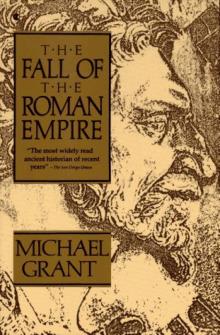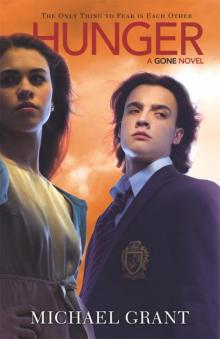- Home
- Michael Grant
Fergie Rises Page 3
Fergie Rises Read online
Page 3
By the time Ferguson arrived at Pittodrie, however, the economic and social landscapes were shifting. In 1969, American drilling rigs struck oil in the North Sea 135 miles east of Aberdeen, and by 1975 the first ‘black gold’ arrived in the city. Then everything changed. The offshore industry needed headquarters and Aberdeen was the only contender. The economic transformation was rapid. Industrial estates were built and money and workers flooded in. Thousands of jobs were created for locals. From a population of around 200,000, by 1978 more than 30,000 were employed in the oil industry. The entire focus of Scotland’s economy shifted from the old, declining heavy industries of the central belt to the newly vibrant north-east coast. The boom paid for new housing, offices and schools as Aberdeen gained a reputation for prosperity and affluence. At a time when many parts of Scotland faced decline and hardship, the city was cocooned. The contrast with Glasgow was stark. The great hub of heavy engineering felt blighted. Its tenement slums had been replaced by high rise flats and soulless suburban housing estates, ‘the schemes’. The collapse of manufacturing industries like steelmaking, shipbuilding and the engine factories led to mass unemployment, deprivation and urban decay. If Glaswegians thought of the North-East as a backwater, then Aberdonians looked down their noses at uncouth ‘weegies’–and the widening economic gap only fuelled the conviction.
Aberdeen supporters never resorted to waving bundles of cash at Rangers or Celtic fans, as fans of London clubs would do during matches against Liverpool, Everton or Newcastle United. But their taunts were no less vicious for being more creative: ‘In your Glasgow slums,’ they chanted, ‘you rake in the bucket for something to eat/you find a dead rat and you think it’s a treat/in your Glasgow slums’. Alex Ferguson never commented on these songs publicly, but their mockery of his home city, of its growing poverty and deprivation, must have sat uneasily with a man whose working-class upbringing and socialist beliefs are matters of fierce pride.
Alexander Chapman Ferguson was born in his grandparents’ council house in the Drumoyne area of Glasgow on 31 December 1941. His father, also Alex, was a shipwright in the Govan shipyards and brought up Ferguson and his brother, Martin, in the shadow of the Clydeside cranes. The family lived comfortably but had no car, television or telephone during young Alex’s childhood. He was a popular boy, a rough diamond, bright and competitive. Fellow Glaswegians recognised him as ‘gallus’–in other words mischievous, opinionated and unabashed. He was also ‘handy’–able to look after himself–and could be hot-headed when slighted. He lived life on the front foot. At sixteen, in 1958, he left school to begin a five-year apprenticeship as a toolmaker in Hillington, four miles from the shipyards. Being street-smart with a readiness to stand up for himself quickly established him as a natural leader, and a barrack-room lawyer in the workplace. He was soon active in the trade union movement, becoming a shop steward and taking a prominent role in two apprentices’ strikes. He was a product of his time and place. The Fergusons were Labour voters, born and bred.
By the time he was a qualified toolmaker his parallel career as a footballer was already underway. He had played throughout his childhood, earning a reputation as a strong and prolific goalscorer as he rose from playing in the street, through Boys’ Brigade and amateur teams, before entering the senior game with Queen’s Park in 1958. Ferguson could terrorise defenders and goalkeepers. He was awkward, brave, physical and robust, often inviting retaliation from grizzled Scottish centre-halves. His elbows seemed as important to his style of play as his feet and he would barge his way into scoring positions. Nor did he keep his opinions to himself: he shared them with opponents and officials, and was not shy of berating his own defenders or goalkeeper when they conceded goals.
Spells with Queen’s Park, St Johnstone and Dunfermline saw his promise steadily grow, and when he signed for Rangers in 1967 the fee of £65,000 was a record for a transfer between Scottish clubs. It was the realisation of a personal dream: Rangers were the team Ferguson had supported since boyhood. But his twenty-nine months at Ibrox turned out to be the most demoralising of his career. The manager who signed him, Scot Symon, was soon dismissed and Ferguson was bounced between the first team and the reserves, drifting in and out of favour. He felt he was made a scapegoat when Rangers lost the 1969 Scottish Cup final 4–0 to Celtic. He was instructed to mark Billy McNeill, but as a striker he lacked defensive instincts and left McNeill unattended at the first goal. The game became unfairly synonymous with Ferguson’s inability to cope with McNeill. He also believed his wife’s religion had counted against him. He was twenty-four when he married Cathy Holding in 1966. Cathy was a Catholic, Alex a Protestant, and sectarianism at the club was an open secret. His spell at Rangers ended sourly in 1969. Almost a decade and a half later, when Rangers held out a hand to take him back, the episode would rebound on them.
Ferguson’s playing career wound down at Falkirk and Ayr United. Though never called up for Scotland, he was a prominent figure of his day, scoring 222 goals in 432 appearances. Regulars at Pittodrie were familiar with him, and not just because he scored eight goals in twenty appearances against them; during a Scottish Cup tie in February 1973, he was embroiled in a scrap with Aberdeen defender Willie Young and sent off before half-time.
By that point he had been a qualified SFA coach for six years. Those who held such qualifications were always welcome at the SFA’s refresher courses, but few bothered to return. Ferguson was one of the exceptions. There was no question that he would try to make a career for himself in coaching. His manager in 1973–74, his final season at Ayr, was Ally MacLeod. When MacLeod was flying out to the 1974 World Cup finals in West Germany he bumped into a friend, Bob Shaw, a director at East Stirlingshire. Shaw had admired Ferguson’s competitiveness and forceful personality from afar and wondered if he might be available for his club’s vacant managerial position. More than twenty men had applied for the job, but after meeting chairman Willie Murihead at a Falkirk hotel, and sailing through his interview, it was Ferguson who was appointed to the part-time role in June 1974 on a wage of £40 a week.
‘The Shire’ are one of those clubs routinely mocked for bumping along in the basement of Scottish football’s lowest tier. Firs Park was demolished in 2012, but in 1974 it was a tiny ground tucked away in an otherwise drab part of Falkirk; its little stand was barrel-roofed and painted in black and white, to match the club’s home colours. Ferguson’s 117 days as manager remain a badge of honour in their history. Summer departures meant he inherited a squad of only twelve players and a budget to rebuild it of just £2,000. The team was made up of part-time journeymen with recent memories of watching or reading about Ferguson at Rangers. When their new boss spoke, they listened. From the outset he demanded the discipline and attention to detail that would remain constants throughout his four decades as a manager. Players were told to turn up in collar and tie. He restructured training sessions and started to give them thorough briefings on the opposition. He even told them the local paper, the Falkirk Herald, was biased towards the town’s larger club, Falkirk. This was nonsense, but he repeated it so forcefully the team began to believe him. ‘The Shire’ had finished sixteenth in Division Two the previous season, but under Ferguson they climbed as high as third, with seven wins and only three defeats in his first dozen league games. Attractive, attacking football also reflected through the gate, and average attendances rose from around 400 to 1,200.
It was quickly apparent, however, that Ferguson’s idea of management involved much wider control of club affairs than any of his predecessors had enjoyed, or expected. When he was challenged by the board for unauthorised spending–he had given £40 to a junior team to come and play a friendly–he startled the directors by threatening to resign. The issue was smoothed over, but the club had been served notice: the 32-year-old was determined to shake ‘The Shire’ by its roots. As Willie Muirhead would later put it, Ferguson was the best thing that ever happened to East Stirlingshire.
Ferguson’s impact did not
go unnoticed and in October 1974 St Mirren inquired if he would take over when Willie Cunningham resigned. It was effectively a step down because ‘The Shire’ were two places above St Mirren in fourth spot in Division Two at the time. The offer left Ferguson uncertain. Both clubs were part-time and he felt a sense of loyalty to the players he had worked so hard to improve. Only when he made a call to Jock Stein, the Celtic manager and Godfather of Scottish coaching, did those doubts clear. Stein told him to sit in the highest point of the stand at Firs Park and then do the same at St Mirren’s Love Street. The advice was cryptic but shrewd. St Mirren’s ground was far bigger (in the 1970s it had a capacity of almost 50,000, nearly all of it terracing) and Ferguson needed only a brief look to compare the scale of the two clubs’ potential. St Mirren had always had been one of the substantial names of the Scottish game. They had won the Scottish Cup in 1926 and 1959 and had finished in the top six as challengers to Rangers and Celtic three times since the end of the Second World War. St Mirren had no business languishing in Division Two, down with East Stirlingshire and the other minnows.
After just 17 games with ‘The Shire’ he took the job and began a crusade to rebuild and reposition St Mirren as a force. His immersion in the task was absolute, to the frequent detriment of time with Cathy and their sons: Mark, who had just turned six, and twins Darren and Jason, who were two. Further time was devoted to running ‘Fergie’s’, a pub in Glasgow within walking distance of Ibrox Stadium, where he was often found serving behind the bar. His working day at Love Street could last for twelve hours or more, and again he tried to exert himself over every aspect of the operation, even secretarial duties and maintenance. With East Stirlingshire Ferguson had shown ambition, but at St Mirren he had a vision. Paisley, an industrialised town in the shadow of Glasgow, had suffered an economic downturn. The area was depressed and unemployment was climbing. Ferguson wanted to give the dispirited locals a football team of which they could be proud. He bubbled with energy and ideas. A weekly club newspaper was introduced, as was a column by Ferguson in the Paisley Daily Express. He drove through the streets with a loudhailer trying to drum up interest ahead of home games. It was an imaginative, almost comic, ploy which made him look like a political candidate on General Election day.
After early inconsistency the results came. Due to league reconstruction, the top six in the 1974–75 season would be rewarded with promotion. St Mirren just made it, finishing sixth. Instead of being in the second of two divisions they were now in the second of three. Ferguson’s confidence grew and he became increasingly decisive. At the end of his first season he released eighteen players. In 1975–76 St Mirren finished sixth again, but this was a team coming together. In 1976–77 they clicked. Ferguson led them back to the top flight for the first time since 1971. Between September and March they remained undefeated for twenty-eight consecutive league games and won the title by four points. They scored ninety-one league goals in thirty-nine matches. But the most electrifying performance came in the Scottish Cup when they routed Dundee United 4–1 on 29 January 1977. More than 15,000 fans followed them to Motherwell in the next round the following month, where they lost an ugly game 2–1.
The team was young, brash, exciting and dangerous. Ferguson inherited an elegant midfielder, Tony Fitzpatrick, and made him captain at the age of eighteen. Alongside him the tall, languid, curly-haired Billy Stark was good for more than ten goals a season from midfield. Frank McGarvey was a penalty box livewire and prodigious goalscorer. The team crackled with other young talents, most notably midfielder Lex Richardson and centre-half Bobby Reid. But in signing left-back Iain Munro from Rangers and centre-half Jackie Copland from Dundee United, Ferguson showed he also understood the value of tempering youth with experience. It did not matter how old anyone was, though: he dominated them all, even issuing warnings not to dare coming back into the dressing room if they had not won. The players feared him but responded. Fitzpatrick remembers being wrong-footed when Ferguson tore through the team after a comprehensive victory. ‘I was silly enough to say, “What the fuck are you looking for? We won 5–0! Are you not happy?” He came over and gave me a Fergie special. He told me in no uncertain terms that he was the manager and it was his standards that counted.’ Another time, Ferguson outlined his vision to Fitzpatrick: ‘“We’re going to build a club that’s going to overtake Celtic and Rangers.” That was his ambition.’
The press latched on to this rising force and coined a nickname: ‘Fergie’s Furies’. Paisley gave him the response he wanted. Crowds soared from an average of 2,267 the season before he joined to 11,793 in the Premier Division in 1977–78. It said as much about the character of the manager as it did about his team’s attacking style. Yet he was still rough around the edges. His reputation for hotheadedness led to conflict with the Scottish Football Association. After bursting into the referee’s room following that Scottish Cup tie at Motherwell and making ‘ungentlemanly remarks’, he was fined £25 and made to sign an assurance that he would not communicate with officials on match days for the following two years. This was not an isolated incident: his time at Love Street brought confrontations with referees, linesmen, opponents, his own players, and the club’s directors and chairman.
Coming up against better opposition in the Premier Division put the brakes on the Furies’ rise. Their first season back in the top flight, at the end of which he would be sacked, proved a constant struggle. St Mirren finished one place above the relegation positions and lost seventeen times in thirty-six games. Nor was there any respite in either of the cup competitions: Celtic beat them in the League Cup and Kilmarnock put them out of the Scottish Cup, at Love Street. Simply surviving in the top ten was an admirable feat for St Mirren’s young manager, but it had been a difficult season. Some of the brightness around his young team had dimmed.
Supporters had been unaware of the growing tension between Ferguson, chairman Willie Todd and the rest of the five-man board. The directors were conservative and mindful of their budget. They also felt their ambitious manager had become overbearing and uncontrollable, so they took the unanimous decision to sack him. ‘Ferguson, who could claim to be just about the most successful and popular manager the Paisley club has had, was summoned by the Love Street board to be told that his contract had been terminated,’ wrote the Glasgow Herald on 1 June 1978. If the news came as a shock, the paper was nonetheless confident about what was about to happen next. The headline on the report read: SACKED FERGUSON TO JOIN DONS.
It was another step up the ladder. East Stirlingshire were dwarfed by St Mirren, who were, in turn, much smaller than Aberdeen. And at the time of Ferguson’s arrival, the Dons had won only two major honours in the 1970s compared to Rangers’ ten and Celtic’s twelve. It was always thus. From the founding of the club in 1903 it had taken Aberdeen forty-four years to win their first major trophy. By 1978 their roll of honour stood at one league championship in 1955, Scottish Cup triumphs in 1947 and 1970, and League Cup wins in 1955 and 1976. Five trophies in seventy-five years. To offset this there was some additional pride in being the only Scottish club, other than Rangers and Celtic, never to have been relegated.
The 1970 cup final had been won under manager Eddie Turnbull against Jock Stein’s mighty Celtic. That could–and maybe should–have been followed by one or two league titles. In 1971 Aberdeen went toe-to-toe with Celtic, but folded near the end of the season and blew a winning position with two games left. In 1972 they were up against Celtic again when the directors suddenly accepted a £125,000 bid from Manchester United for their outstanding defender and captain, Martin Buchan. The money made sense, the timing did not. Aberdeen were only three points off the top of the league and were in the quarter-finals of the Scottish Cup; after Buchan was sold in February, they were immediately knocked out of the cup and finished ten points behind the champions. Turnbull was irascible and confrontational, a disciplinarian and a brilliant coach who provided the kick-start Aberdeen needed after their drab and mediocre 1960s. He sh
arpened the training, modernised the way the club was run, and shared Ferguson’s fearlessness about taking on the Old Firm. Several first-team players were close to tears when Turnbull announced he was resigning to take charge of Hibernian in 1971. Jimmy Bonthrone, a reserved, gentle man, stepped up from assistant manager. He was methodical and well-liked, but he lacked both ruthlessness and Turnbull’s inspirational touch. Decline set in during his four seasons in charge. When he resigned in October 1975, Aberdeen were immersed in a relegation battle they would only survive on goal difference by winning on the final day of the season.
By the mid-1970s Aberdeen had become a docile, ordinary club badly in need of a leader. Three men recognised that and decided to take action. Aberdeen’s board was unique in Scottish football in that it consisted solely of former players: Dick Donald, Chris Anderson and Charlie Forbes. Donald and Anderson were Pittodrie’s twin pillars. Donald, sixty-seven in 1978, was part of a wealthy local family whose business empire had made millions from the entertainment industry, specifically dance halls, cinemas and theatres. At sixteen he began running one of his father’s cinemas and also followed in his footsteps, literally, by becoming a qualified ballroom dancing instructor. Long after his seventieth birthday he would amuse himself by doing impromptu little dances in the corridors of Pittodrie. Donald was an Aberdeen man through and through with old values and old money. On most days of the week he would turn up at the ground dressed in a pin-stripe suit, collar and tie, overcoat and soft hat. Jokes about Aberdonians and their supposed meanness might have been cracked with him in mind. When he entered a room at Pittodrie he would ask why all the lights were switched on. He refused to agree to high transfer fees, excessive wages or bonuses and never allowed the club to go into debt. If an attractive offer came in for a star player, Donald was likely to sell him. Such frugality exasperated many supporters but delivered stability and credibility. Club myth had it that Donald could stand at the mouth of the Pittodrie tunnel a couple of minutes before kick-off, look around all four sides of the ground and correctly estimate the size of the attendance to within one hundred.

 Fear
Fear Plague
Plague BZRK: Apocalypse
BZRK: Apocalypse Bzrk
Bzrk Love Sucks and Then You Die
Love Sucks and Then You Die Silver Stars
Silver Stars The Key
The Key Front Lines
Front Lines BZRK Origins
BZRK Origins Monster
Monster Gone
Gone The Snake
The Snake The Power
The Power Hunger
Hunger Lies
Lies A Sudden Death in Cyprus
A Sudden Death in Cyprus Messenger of Fear
Messenger of Fear Eve & Adam
Eve & Adam The Trap
The Trap Light
Light An Artful Assassin in Amsterdam
An Artful Assassin in Amsterdam The Call
The Call Hero
Hero Soldier Girls in Action
Soldier Girls in Action Purple Hearts
Purple Hearts The Tattooed Heart
The Tattooed Heart The Fall of the Roman Empire
The Fall of the Roman Empire BZRK Reloaded
BZRK Reloaded Messenger of Fear Novella #1
Messenger of Fear Novella #1 The Magnificent 12
The Magnificent 12 Fear: A Gone Novel
Fear: A Gone Novel Villain
Villain Manhattan
Manhattan Eve and Adam
Eve and Adam Plague: A Gone Novel
Plague: A Gone Novel Fergie Rises
Fergie Rises In the Time of Famine
In the Time of Famine Hunger_A Gone Novel
Hunger_A Gone Novel Lies g-3
Lies g-3